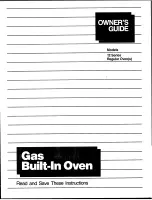
en
Tested for you in our cooking studio
46
Acrylamide in foodstuffs
Which foods are affected?
Acrylamide is mainly produced in grain and potato
products that are heated to high temperatures, such as
crisps, chips, toast, bread rolls, bread, fine baked
goods (biscuits, gingerbread, cookies).
Test dishes
These tables have been produced for test institutes to
facilitate inspection of the appliance.
In accordance with IEC 60350-1 and IEC 60705.
Baking
Notes
■
The settings apply to food that is placed into a cold
cooking compartment.
■
Observe the notes about preheating in the tables.
The settings apply without rapid heating.
■
When baking, use the lower of the listed
temperatures to begin with.
■
The values in the table apply to food placed in a cold
oven.
■
Place baking tins on the wire rack.
Preparing food with a microwave
When preparing food in a microwave, always use heat-
resistant cookware that is suitable for microwave use.
Observe the notes on cookware suitable for
microwaves.
~
"Microwave" on page 16
Microwave defrosting
Microwave cooking
Tips for keeping acrylamide to a minimum when preparing food
General
Keep cooking times as short as possible. Cook food until it is golden brown, but not too dark. Large, thick pieces of food
contain less acrylamide.
Baking
Use hot air at no higher than 180 °C; egg or egg yolk reduces the production of acrylamide.
Biscuits
Use hot air at no higher than 180 °C; egg or egg yolk reduces the production of acrylamide.
Oven chips
Spread out a single layer evenly on the accessory. Cook at least 400 g each time so that the chips do not dry out.
Dish
Cookware
Shelf position Heating
function
Temperature
in °C
Cooking time
in min
Viennese whirls
Glass tray
2
<
160-170
30-35
Small cakes*
Glass tray
2
<
160-170
20-25
Hot water sponge cake
26 cm springform cake tin
1
<
160-170
40-50
Double-crusted apple pie
20 cm springform cake tin
2
<
170-190
80-100
*Preheat the oven for 5 minutes
Dish
Cookware
Shelf po-
sition
Heating
function
Weight
Steps
Microwave set-
ting
Cooking time
in min
Defrosting meat
Cookware, uncovered
0
!
500 g
1
2
180
90
7
8-12
Dish
Cookware
Shelf position Heating
function
Weight
Steps
Microwave set-
ting
Cooking time
in min
Custard
Cookware, uncov-
ered
0
!
1000 g
1
2
360
180
18-20
18-22
Sponge cake
Cookware, uncov-
ered
0
!
475 g
1
600
8-10
Meatballs
Cookware, uncov-
ered
0
!
900 g
1
600
20-25
Tested for you in our cooking studio
en
47
Combined microwave cooking
Steaming
Place the glass tray with steamer basket on shelf
position 3.
Grilling
Place the glass tray underneath the wire rack to catch
the liquid and keep the cooking compartment cleaner.
The values in the table apply to food placed in a cold
oven.
Dish
Cookware
Shelf posi-
tion
Heating
function
Tempera-
ture
in °C
Grill set-
ting
Microwave
setting
Cooking
time
in min
Notes
Potato gratin
Cookware,
uncovered
0
(
+
!
-
1
360
25-32
Cake, 700 g
Cookware,
uncovered
1
<
+
!
190-200
-
180
20-27
Chicken
Cookware,
uncovered
0
4
+
!
190
-
360
30-45
Breast side down.Deep cook-
ware without a lid. Turn half-
way through the cooking time.
Dish
Cookware
Shelf posi-
tion
Heating
function
Steam set-
ting
Cooking
time
in min
Notes
Peas, frozen, 1000
g
Glass tray + steaming
tray
3
"
3
-
The test is complete once the coldest
area has reached 85 °C.
Broccoli, fresh, 300
g
Glass tray + steaming
tray
3
"
3
10
- 12
Broccoli, fresh, one con-
tainer
Glass tray + steaming
tray
3
"
3
16
- 18
Dish
Cookware
Shelf posi-
tion
Heating
function
Grill setting Cooking time
in min
Notes
Toasting bread
Wire rack
3
(
3
4-5
Beefburgers, x 12
Wire rack + glass tray
3+1
(
3
35-45
Turn halfway through
Содержание CMG676BS6B
Страница 2: ......


































